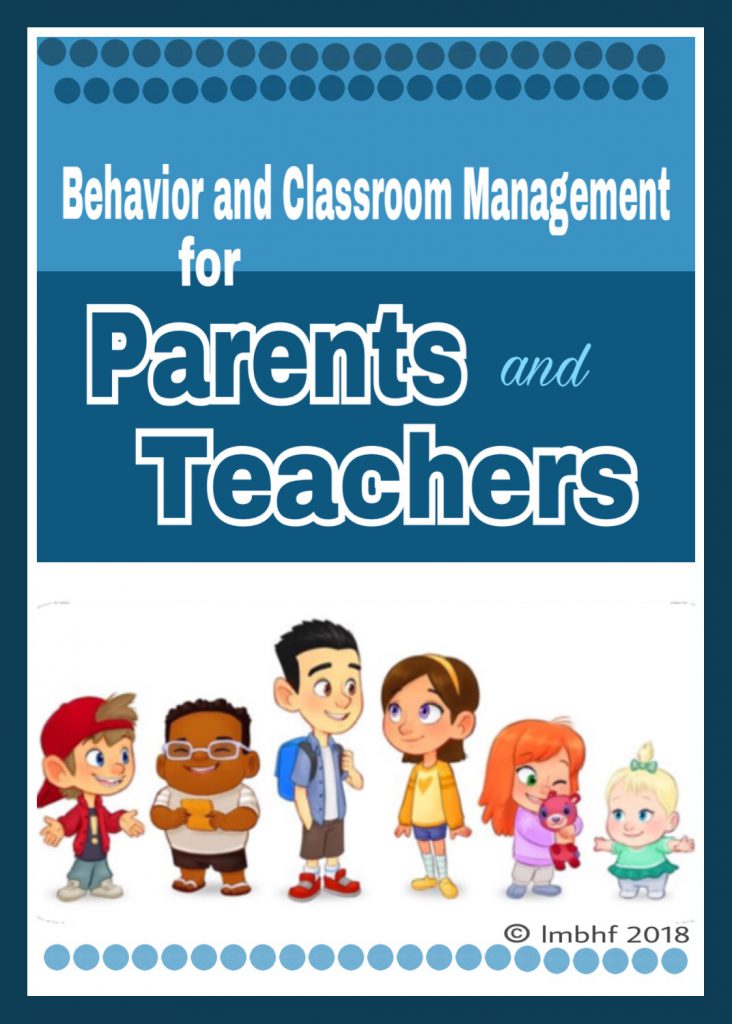Behavior and Classroom Management for Parents and Teachers
April 6, 2018|Posted in: Happy, Healthy, Smart Kids!
Behavior and Classroom Management
One of the most frustrating tasks charged to parents and teachers alike, is the task of getting children to behave. We’ve all seen (or been) the frustrated and embarrassed parent of a child throwing a temper tantrum in the grocery store. Most of us have experienced (if not from the point of view of the teacher, then from that of the student) the chaos of a classroom full of out-of-control students.
While the rules, rewards and consequences will vary greatly with the age of the child(ren) for which you’re implementing the plan, the basics of the plan will remain the same no matter what the age of the child(ren). This is a plan that will work for toddlers to teenagers!
The plan is fairly simple and straight forward. The difficult part for the parents and teachers is having the self-control and dedication to implement the plan to fidelity. In short, in order to have a successful behavior management plan as a parent or teacher you must first be able to manage your own behavior, be able to consistently and faithfully follow the plan at all times. That is easier said than done, I know. But, our failures serve to teach us to have compassion for the children who are learning, and whom we are teaching, this difficult skill.
With that said, here are my Five Steps to a Successful Behavior and Classroom Management Plan:
Behavior and Classroom Management for Parents and Teachers
Have Confidence
The first essential element of behavior/classroom management for every parent and teacher is confidence. The adults need to be confident that they know how to implement a plan to teach and motivate children to behave. Similarly, they must be confident that they will implement that plan. I can’t count how many times I’ve heard a parent or teacher incorrectly use the count to three method to show children they mean what they say. It usually goes something like this: “One ! Two!” long pause – big heavy sigh – and finally they repeat their request for a specific behavior in a screechy, frustrated tone of voice! Recently my little niece who is almost four was trying to convince her mom to let her do something. Her mom wasn’t inclined to do so and they were having a somewhat intense negotiation over the issue. Finally, my niece said, “Mom, just say (insert “sigh of resignation” sound here) already!” Now, that makes a very cute and funny story and we all had a great laugh over it. But it also illustrates this point perfectly. If you don’t believe yourself that you will follow through with what you say, it’s a sure bet that the children whose behavior you’re trying to manage, won’t believe it either!
Parents and teachers must be confident that they are in charge and clearly communicate that confidence to their children/students through their tone of voice, body language and their actions.
Be Well Prepared
It’s important for parents and teachers to be well prepared with ideas and activities that will help children to behave their best. Think ahead and avoid situations and circumstances that are likely to cause or influence undesired behavior, such cranky child that missed their afternoon nap or a class of students that must wait for the next activity with nothing to occupy their minds and bodies. Plan for transitions and anticipate how children will react in any given situation. Parents who want their child to be quiet while sitting through a performance or a wedding or such need to be prepared with a book for them to look at, a pacifier, a coloring book and crayons, etc. Teachers who want well behaved students need to be well prepared with a variety of interesting educational activities and be flexible and ready to handle situations where students finish early or the unexpected happens, such as a projector that stops working.
Build Strong Relationships
It’s imperative for every parent and every teacher to build strong, positive relationships with each child that they want to influence. All children need to feel respected, valued and listened to; and to live and learn in an atmosphere that is enjoyable and where the children feel and experience success. You may be able to get children to behave momentarily by bullying, yelling or with threats. But those results will only be temporary and those methods don’t teach children the skills to manage their own behavior. No one, child or adult, will ever be motivated to be their best self in an atmosphere of fear and oppression. Children need to know that you care and have their best interests in mind.
Establish Clear and Concise Rules, Rewards and Consequences
Every successful behavior/classroom management plan will include rules and expectations that are concise and clearly defined. The same goes for the rewards for following, and the consequences for not following, those rules and expectations. Parents and teachers need to give careful thought to what their goals are; what kinds of behavior do they want and expect from the children? They also need to firmly decide ahead of time, how they will reward the children when they meet those expectations and what the consequences will be when they don’t. Don’t have to many or overly complicated rules, keep them simple and concise. It’s also a very good idea to have those rules, expectations, rewards and consequences written where they can be easily seen, referred to, and reviewed with the children on a regular basis.
Follow the Plan Faithfully and Consistently
The fifth, and final (and most challenging) step of this behavior/classroom management plan is to follow the plan faithfully and consistently. In order for the plan to be successful it must be followed to fidelity. Children thrive on consistency and it lays a firm foundation for them to learn and build upon their skills and ability to manage their own behavior.
Remember, you can do hard things and so can the children in your charge. If you faithfully implement this behavior and classroom management plan you will create an environment where parents, teachers and children can be happy, successful and thrive!
Please share with us in the comments your successes and failures in implementing a successful behavior and classroom management plan. The best of luck to you!
You might also enjoy reading these articles:
Teaching Kids to be Trustworthy
and Earning Your Children’s Trust
Here are some related products from Amazon that you might like. Just click on the photo or the description to be redirected to Amazon where you can purchase the products.
Teacher Created Resources Mini Happy Face Stickers Valu-Pak, Multi Color (6633)
Rewards Chore Chart for Kids – 49 Responsibility and Behavior Chores – Ultra Thick Magnetic Board
2 Comments
Leave a Reply
*










Clearissa Coward
May 1, 2018
Good advice. Thanks for sharing. #TheBloggingrandmothersLinkParty
Melinda J Mitchell
May 3, 2018
Thanks for this clear, concise plan. All true!
#TheBloggingrandmothersLinkParty